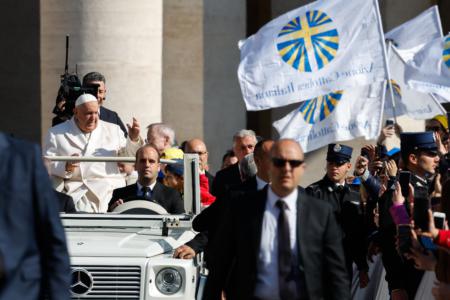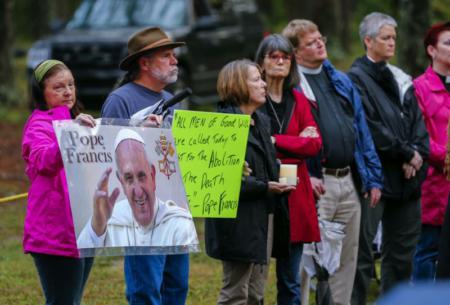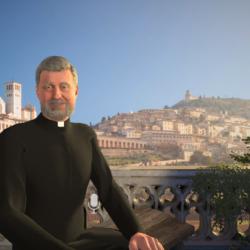U.S. Supreme Court continues to look at death penalty in small increments
WASHINGTON (CNS) -- When Pope Francis addressed a joint meeting of Congress Sept. 24 and said the death penalty should be abolished, the four Supreme Court justices in attendance did not applaud or even react.
Not long after this speech -- where the pope emphasized that every life is sacred and "society can only benefit from the rehabilitation of those convicted of crimes" -- the death penalty was front and center again for the pope and the justices.
Less than a week later, the U.S. papal nuncio sent letters to two states appealing on the pope's behalf to commute death sentences. One appeal was to the Georgia Board of Pardons and Paroles not to execute Kelly Gissendaner, who was executed Sept. 30. The other was to Oklahoma Gov. Mary Fallin to commute Richard Glossip's death sentence. Glossip was granted a last-minute stay which was later rejected by the U.S. Supreme Court. His execution is scheduled Nov. 6.
When the Supreme Court began its new term the first week of October, its first cases were death penalty related involving sentencing requirements and jury instructions in consolidated cases from Kansas.
Although the court is hearing a handful of death penalty cases this year, none of them will require the court to weigh in on capital punishment overall, just to examine different aspects of it.
In mid-October, the high court heard arguments questioning if Florida judges should be allowed to impose the death penalty even if jurors are not in full agreement about it. On Nov. 2, the court considered whether Georgia prosecutors violated rules against racial selection of juries by striking four prospective African-American jurors in a 1986 murder case of an elderly white woman. The defendant, Timothy Foster, who is black, was tried by an all-white jury and his conviction led to a death sentence.
Later in the term, the court will consider whether a state judge in Pennsylvania who upheld a death-row inmate's conviction should have recused himself from hearing his appeal because of his prior role as a prosecutor on the case.
During arguments in Foster v. Chatman, which questions racially biased jury selection, the court revealed how it is conflicted on death penalty cases and also how it is carefully making sure the cases they are hearing follow the right procedures, said Meg Penrose, professor of constitutional law at Texas A&M's University School of Law.
Penrose told Catholic News Service it was significant that Foster's attorney, Stephen Bright, had to spend 12 of his allotted 30 minutes answering a technical question about how to treat two state court rulings that were made after the guilty verdict in the case had become final.
She said even though people would like the high court to rule definitively on this issue, the justices are not about to do so just on the merits of each case but want to be sure "they are right on procedures."
"They realize the magnitude of their decision," she added.
Penrose has represented nine Texas death-row inmates in federal court on a pro bono basis, including Licho Escamilla, who was executed Oct. 14 for killing a police officer. "It's horrible, horrible work," she said. The night Escamilla was executed, she was giving a lecture at the University of Notre Dame called: "The Death Penalty, Dignity and Doing Justice."
She said the Supreme Court seems currently unwilling to "interject itself" on the constitutionality of the death penalty, even though there were indications it might based on Justices Stephen Breyer and Ruth Bader Ginsburg's dissent in last term's decision upholding a controversial lethal injection protocol.
Another sign the court might be shifting, at some point, was Justice Antonin Scalia's comments Oct. 20 at the University of Minnesota Law School.
According to The Associated Press, Scalia told the audience it wouldn't surprise him if the court overturned capital punishment and said the high court has increasingly made it difficult impose the death penalty. Scalia said rulings have added mitigating circumstances that must be considered or made it impermissible to automatically sentence people to death for certain crimes, such as killing a police officer.
Supreme Court rulings on the death penalty have evolved over the years. In 1972, the court found the death penalty to be "arbitrary and capricious" and struck it down, but then reinstated it four years later. Within the past 10 years, the court has barred the execution of juvenile offenders, those with intellectual disabilities and people convicted of crimes against individuals other than murder.
But even with such changes, it isn't enough until the practice stops, emphasized the Catholic bishops in a statement this summer renewing the U.S. Catholic Church's push to end the death penalty and commemorating the 10th anniversary of the bishops' Catholic Campaign to End the Use of the Death Penalty and their message "A Culture of Life and the Penalty of Death," which accompanied the campaign.
The bishops noted that in 10 years "significant gains have been made."
"Several states, including New York, New Jersey, New Mexico, Illinois, Connecticut, Maryland and most recently Nebraska, have ended the use of the death penalty, and other states have enacted moratoria," they said. "Death sentences are at their lowest level since the reinstatement of the death penalty in 1976. However, there is still a great deal of work to be done, and we must recommit ourselves to end this practice in our country."
Pope Francis referred to their statement in his address to Congress, saying not only did he support his "brother bishops" but he also offered encouragement to those similarly convinced "that a just and necessary punishment must never exclude the dimension of hope and the goal of rehabilitation."

















